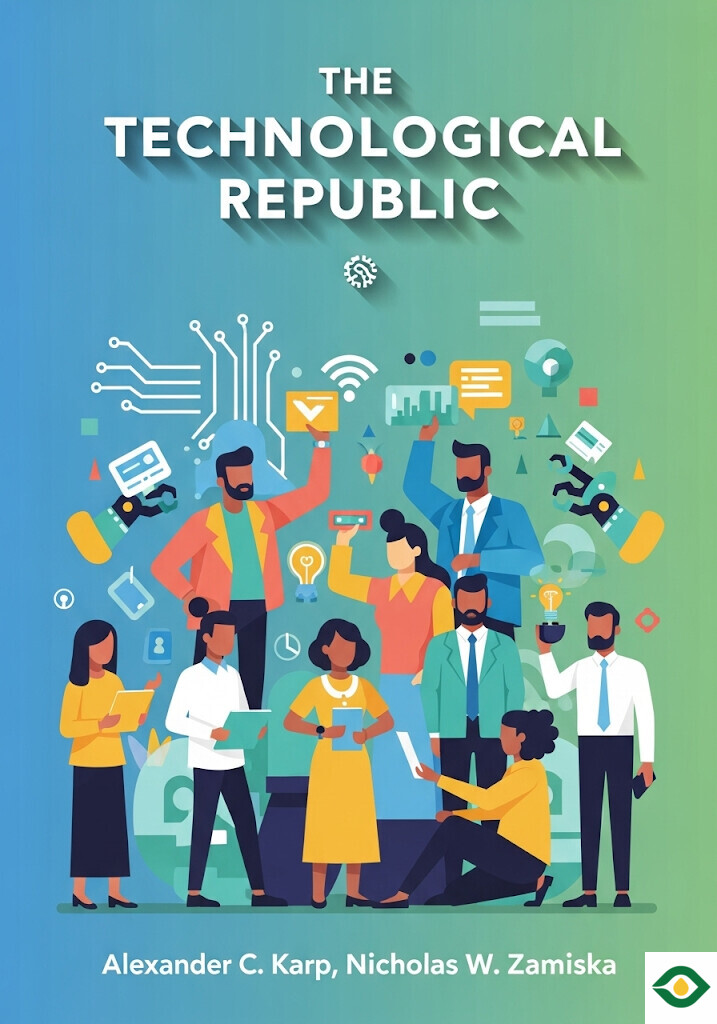Description
Technology has always shaped the fate of nations, and in today’s world, it has become more important than ever. The book The Technological Republic argues that the United States is at a turning point. The old balance of power, which seemed secure after the Cold War, is gone. Authoritarian governments are rising, conflicts are spreading, and the next great struggle may not be fought with tanks or missiles, but with algorithms, artificial intelligence, and advanced digital systems. To survive and remain strong, America must once again see itself as a technological republic—a country where innovation, science, and civic duty work together.
For many years, Americans believed that history had ended. After the collapse of the Soviet Union, the world looked safe. People thought democracy and free markets would spread everywhere. The United States enjoyed what was called the “peace dividend”—a long stretch where war seemed far away, and global threats felt smaller. But that optimism proved short-lived. Countries like Russia, China, and Iran began to challenge this order. Wars, invasions, and arms races returned. What looked like stability turned out to be only a pause. Today, we live in a world where competition is once again fierce.
One of the major problems the book points out is that the United States is not ready for this new reality. The country spends enormous amounts of money on defense, but it has lost the ability to produce what it needs quickly in a crisis. Decades of consolidation reduced the number of defense suppliers, and with it, innovation slowed. If a major conflict with a strong opponent erupted, America could run out of crucial supplies like artillery shells in weeks. This is a dangerous weakness, and it shows how unprepared the nation has become.
At the same time, technology itself is changing the shape of war. In the past, power came from weapons made of steel—tanks, planes, bombs. Today, software and artificial intelligence are just as important, if not more so. Algorithms can guide drones, predict enemy movements, and even control entire battle systems. This shift means that whoever leads in software will also lead in military strength. Just as the atomic bomb once reshaped global power, AI will define the twenty-first century.
The challenge is not just about building new tools but about who gets there first. America’s rivals are moving quickly. They are willing to use AI for weapons and strategy without much hesitation. In contrast, many American tech companies resist working with the military. Silicon Valley has often chosen comfort and profit—designing food delivery apps, ad systems, and entertainment platforms—rather than tackling the hard tasks of national defense. Engineers protest when asked to work on defense projects, even though their competitors overseas face no such moral debates.
This reluctance creates a dangerous gap. If American companies do not build the software of the future, someone else will. And if rivals control the most advanced technologies, America’s ability to defend itself and its allies will be weakened. As the book explains, peace itself depends on strength. History shows that powerful weapons, as frightening as they are, have often prevented wars by making nations too afraid to fight. In today’s world, that “power to hurt” no longer comes from nuclear weapons alone but from advanced digital and AI systems. Without them, America risks losing its edge.
But this book is not just about weapons. It is also about identity and purpose. From the very beginning, the United States was a land of inventors and thinkers. Leaders like Benjamin Franklin and Thomas Jefferson experimented with science and technology. Later, the government worked closely with scientists to create groundbreaking systems like GPS and the internet. These partnerships not only helped win wars but also created tools that transformed everyday life. America became a “technological republic” because it combined innovation with a larger vision of national progress.
That partnership, however, is breaking down. Today, the brightest minds often prefer building entertainment apps over solving real problems. Companies focus on short-term profit instead of long-term security. The result is a loss of shared purpose. Instead of feeling like they are working for the common good, many engineers see themselves only as private employees. Yet history shows that great progress happens when scientists, businesses, and government work together for a higher goal.
The deeper message of the book is about unity and meaning. Nations are not held together only by borders or armies; they are bound by shared beliefs and common stories. In the past, Americans believed in a larger vision called exceptionalism—the idea that their nation had a special mission to stand for freedom and progress. That belief gave people courage to sacrifice for the greater good. Over time, however, that spirit faded. It was replaced by consumerism, relativism, and a focus on individual comfort.
If America wants to succeed in this new era, it must recover its sense of purpose. Technology is not just about profit. It can serve freedom, democracy, and human dignity. To do so, it needs a cultural shift: scientists and engineers must see their work as part of a larger story, one where innovation serves the whole nation and not just shareholders.
In the end, The Technological Republic argues that America stands at a crossroads. The choice is clear. It can continue on its current path—comfortable, distracted, and unprepared—or it can revive the spirit of unity and innovation that once defined it. If it chooses the second path, it can lead the world into a future where technology serves both progress and peace. If not, it risks falling behind in a dangerous world.
This book is not only a warning but also a call to action. It urges readers to think about the role of science, technology, and national identity in shaping the future. It reminds us that peace requires strength, innovation requires purpose, and freedom requires commitment. America can still be a technological republic, but only if it rediscovers the balance between innovation and responsibility.





